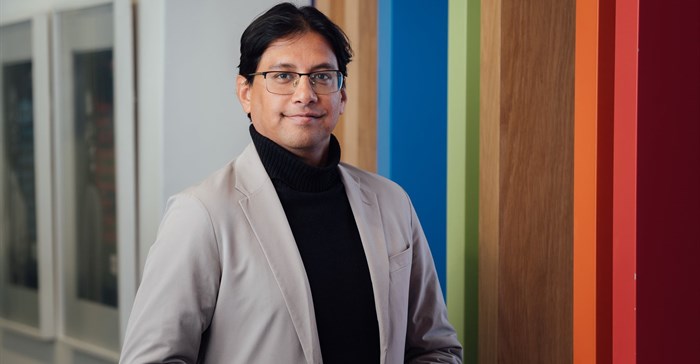Merriam-Webster selected "authentic" as the word of the year in 2023 due to a significant surge in searches seeking its meaning. While in the realm of marketing, authenticity has been a prominent buzzword for an extended period and is poised to remain a guiding principle in the foreseeable future.

Arpan Sur, senior director, marketing, sub-Saharan Africa at Mondelez International. Source: supplied.
Consumers must be central
Many organisations claim to have their consumers at heart when they plan and execute, but few actually get it right. When truly committing to the customer-centric model, it’s essential to ask questions and gain a genuine understanding of your consumer.
Our research in the snacking space in Africa showed that, despite the tough economic climate across much of the continent, consumers are increasingly turning to snacks as a reward, indulgence and an anchor of sorts.
In times of crisis, they stick with the brands with which they have forged meaningful relationships over time. Younger consumers are continually looking for new experiences, but also have a strong affinity for continuity and loyalty. Older consumers have nostalgia – linked to long-term brand affinity which is front-of-mind when snacking.
People look back fondly to being young and getting rewarded for doing well in an exam and enjoy sharing the Chappies wrapper ‘Did You Know’s of their youth, with their own children.
Because of the economic challenges they face, consumers are also seeking value – and in brands for which they have an affinity, they see that value, built on consistency and history. In snacking, they’re looking for both sustenance and a treat – and a bit of comforting familiarity at the end of a day which might not have gone as planned.
Mindfulness and sustainability
Mindful snacking is also playing an increasingly important role in consumers’ minds. They are looking at the sustainability of production and distribution of their favourite products, as well as the benefits of consuming them. People want to know the provenance of what they’re eating and what it contains – and offering transparency at that level can also help build brand affinity.
That said, when they snack mindfully with a focus on health, they also don’t want to compromise on taste and the indulgence factor, which is an important balance to achieve for an organisation like ours. Portion control also comes into the conversation here – indicating serving sizes on packaging and educating consumers about proportionate consumption.
Offering them choices that range from ‘indulgent’ to ‘healthy’, if we can look at that as the snacking continuum, is also essential, as is being honest about the contents, provenance and suggested portion sizes communicated on our packaging.
The digital opportunity
How we communicate with consumers has become increasingly relevant – and communication in the digital space is incredibly important in reaching consumers on the platforms where they spend hours every day and want to engage with content that is authentic and not a hard sell.
Up to 50% of our marketing investment is in the digital space for a couple of reasons: firstly, the number of people consuming digital content is rising; secondly, the number of people watching ads on television is decreasing and; thirdly, because we can more effectively target consumers with digital content than we can with broadcast content.
Melusi Makhoba 4 Mar 2024
For example, offering consumers the opportunity to virtually hide easter eggs across South Africa and invite family and friends to find them by posting a set of clues was a great way for consumers to engage on a digital medium.
Find the right influencers and audiences
Looking at authenticity again, we have always used influencers as brand ambassadors on the understanding that we give them the messaging we would like them to communicate and they rework it in their own way, to speak to their followers as they usually would.
It moves marketing away from brand language and taps into the relationship that influencers and their audiences have built over time. That requires an understanding of both the influencers and their audience to ensure that the fit is good for the brand.
When considering our array of digital assets and influencers for a campaign, we have to be acutely aware of information overload. If a brand produces safe work, they’ll become part of the wallpaper, so you have to be a bit bold. For brands which are clear in their purpose, and strengths and differences, are more easily and effectively able to be authentic in their communication and stand out immediately.
In our case, our brand has a long history of inspiring generosity in our consumers. For Christmas 2023, we urged consumers to pause and consider the many people who helped them survive a difficult year - and send them a message of thanks in the form of a slab of our chocolate.
We based this on the World Giving Index Rankings that showed that South Africa, previously in the top 20, had slipped to 57th place. There’s a bigger purpose that we stand for and we want to land that authentically.
Where to for 2024?
Marketers are forced to gaze into crystal balls each year in an attempt to predict what the trends for the year ahead will be – or indeed, if they can set them. The world around us is changing faster than ever before, making predictions challenging. We have to focus on delivering for tomorrow.
I am focusing on three tips for creating and maintaining effective consumer connections for 2024: be clear, be courageous and be connected.
In defining a brand’s purpose, we need to ensure that both internal and external partners are clear on exactly what it stands for. When poor work is produced, it’s usually through a lack of understanding or shared purpose.
In being courageous, we need to do something that, particularly in the digital space, makes consumers sit up and take notice. Produce bold work. Take risks with digital, adjust if things don’t go the way as expected and scale up the budget and roll out once you’re sure the message is landing. Being connected means understanding that you can’t do everything on your own.
There are so many teams in an organisation dedicated to achieving the same goal, so collaborate with them, work to understand each other better and develop an integrated commercial plan. Connect properly with external partners – creative, PR, media, production and the like – to make sure you get the best out of hard-won teamwork. That way, we give ourselves the best possible chance of creating magic.



































